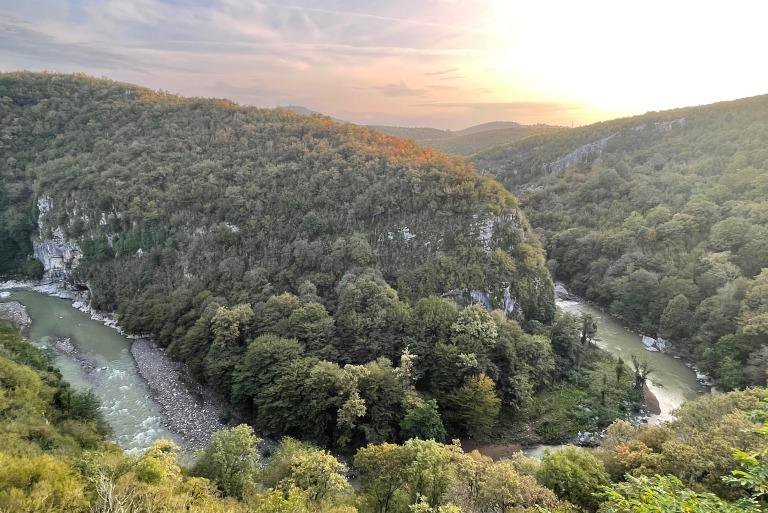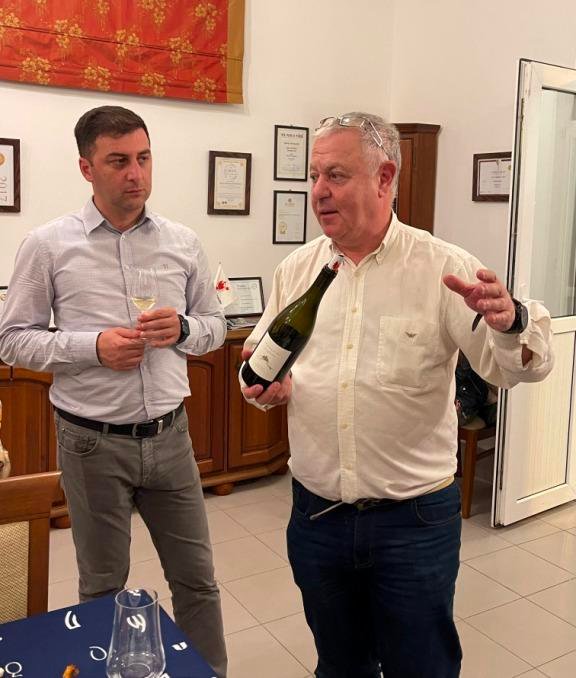
Увага! На сайті використовуються cookie файли.
The site uses cookie files
Даний сайт має вікове обмеження.
This site has age restrictions!
Я підтверджую, що мені, на жаль, давно виповнилося 18 років
In early October, a competition dedicated to the wines of Imereti was held in Georgia, at the Sairme Hotels & Resorts mountain resort.
At the organisers’ invitation, the Drinks+ and Wine Travel Awards columnist joined the jury together with respected international experts and specialists from Georgia.

For the first time this year, the best wines of the region were examined by such a representative panel:

To understand the event value, we should explain that the Imereti wine region is still inferior to the more recognisable Kakheti on the international stage. Nevertheless, Imereti has everything it needs to attract tourists and represent the country outside of Georgia with dignity: large areas of vineyards, a wide variety of grape varieties, modern and traditional winemaking technologies, outstanding winemakers, and many attractions for wine and gastronomic tourism supported by the state and NGOs, as well as natural, historical and cultural attractions.

Imereti is the heart of Georgia, beating among mountains, rivers, waterfalls, canyons, and plains. This is the place where the state was born. And, of course, it is one of the most prominent wine regions in Georgia. Mountains occupy 70% of the territory, so different zones with their microclimates and soil types provide a wide range of Imereti wines. Imereti is one of the most important regions of Sakartvelo, both in terms of quantity and quality of wines.

Thus, the competition aimed to draw attention to the region, promote information about Imereti wines, and develop wine tourism. But before the evaluation process began, the members of the tasting panel were immersed in the environment: the organisers arranged a tour of several local wineries, as well as the most prominent tourist, cultural and gastronomic locations in Imereti.

The excellent programme for the international group of judges was implemented under the leadership of Mari Devidze, Executive Director of DMO Imereti, and Ketevan Jurkhadze, Director of the Imeretian Wine Association. Let me remind you that the Imeretian Wine Association was established in 2022 with the support and initiative of DMO Imereti. Therefore, 2023 was a very active year for the association: developing strategies, participating in international competitions, and presenting wines from Imereti wineries at international wine events.

Currently, the association includes about 70 wineries and marani (cellars). Holding its wine competition has become a new qualitative stage in the association’s activities. The group of experts visited Baya’s Wine, Khareba, and Vartsikhe Marani wineries, where they were given wine tastings. By the way, Khareba winery, in addition to the traditional portfolio of this titled producer, which includes the premium line of Chateau Lipartiani, presented two wines of the new project of Robert Joseph and Vladimer Kublashvili – white and red TM Κ’AVSHIRI, which means “union” – and this name fully reflects the harmonious essence of this outstanding wine.

Let me digress a little from the main topic and tell you in a nutshell about this project, which the authors have been working on for about five years. The white wine, which is presented as the 2022 assemblage, is made from 10 grape varieties using 10% quevra, 10% recycled barrels, and 80% steel containers. The 2022 wine combines grapes from two regions – Kakheti and Imereti – in equal proportions.

However, the creators do not limit themselves to promising to stick to these proportions in the future. The first release saw the light of day in the amount of just over 2000 bottles, of which 996 were sold; the next one is planned in more serious volumes – 25–30 thousand bottles. The red Κ’AVSHIRI is made using the same principle as the white wine (quench, barrel, and steel) and contains 5% white grapes. The wine was co-fermented with Saperavi-Rkatsiteli, Saperavi-Mtsvane, Saperavi-Aleksandrouli, Ojaleshi, Aladasturi, Otskhanuri Sapere and Merlot. The joint fermentation enriches the wine’s profile, it acquires new characteristics, and Merlot adds perfumed notes to the tones of red fruits and spices.

Paul Robert Bloom has aptly named the red Κ’AVSHIRI 3D wine. Robert considers the tasted sample to be not quite mature yet, and although this batch was bottled in March 2023, the rest of the wine is still in the barrel. But back to the competition.

The Imeretia Wine Competition was held according to the standards of the International Organisation of Grapes and Wine (OIV). The competition was attended by 32 producers with 120 wines, and the jury members – representatives of wineries – did not submit their wines for evaluation, thus ensuring maximum impartiality of the competition. The Imereti wine region is famous for its white wines. The most common varieties are the white Tsitska, Tsolikouri, and Krakhuna. They are used in the production of single-varietal and blended wines in the European style, as well as in the use of quenchers, which are called churi in Imereti. In the production of churi wines, up to 30% of the grape volume is usually used with pulp – only the skin without ridges, the rest is pure grape juice. That is why Imeretia’s wines have greater freshness, high acidity, and bright aromas. For example, Tsitska often gives notes of yellow fruit, sometimes complemented by honey tones. Its naturally high acidity allows this variety to be used for sparkling wines. Tsolikouri is a medium to full-bodied wine, slightly oily, with mild acidity and subtle notes of yellow fruit, minerals, and a light floral hint. These two varieties often produce excellent results in a blend. Another popular white variety, Krakhuna, is also characterized by high acidity, and is used both as a standalone and in blends, and with aging, it becomes elegant. The production of red wines has increased in recent years, with the most popular varieties being Otskhanuri Sapere, Aladasturi, Dzelshavi, and Rko. I would also like to note the overall high quality of the wines participating in this competition – for me, it was not just a simple judging exercise, but a series of pleasant discoveries.

On 4 November, the winners of the competition were announced and an award ceremony was held in Kutaisi, the administrative and cultural centre of Imereti. 7 contestants received the Grand Gold medal, 9 participants were awarded the Gold medal, and 17 – the Silver medal. The list of winners is available here.

Congratulations to the organisers on the brilliant result – the competition was held at a high international level, and all participants demonstrated the powerful potential of this wine region, which deserves recognition from industry experts, wine lovers, and wine tourists from all over the world!
12.12.2025
10.12.2025